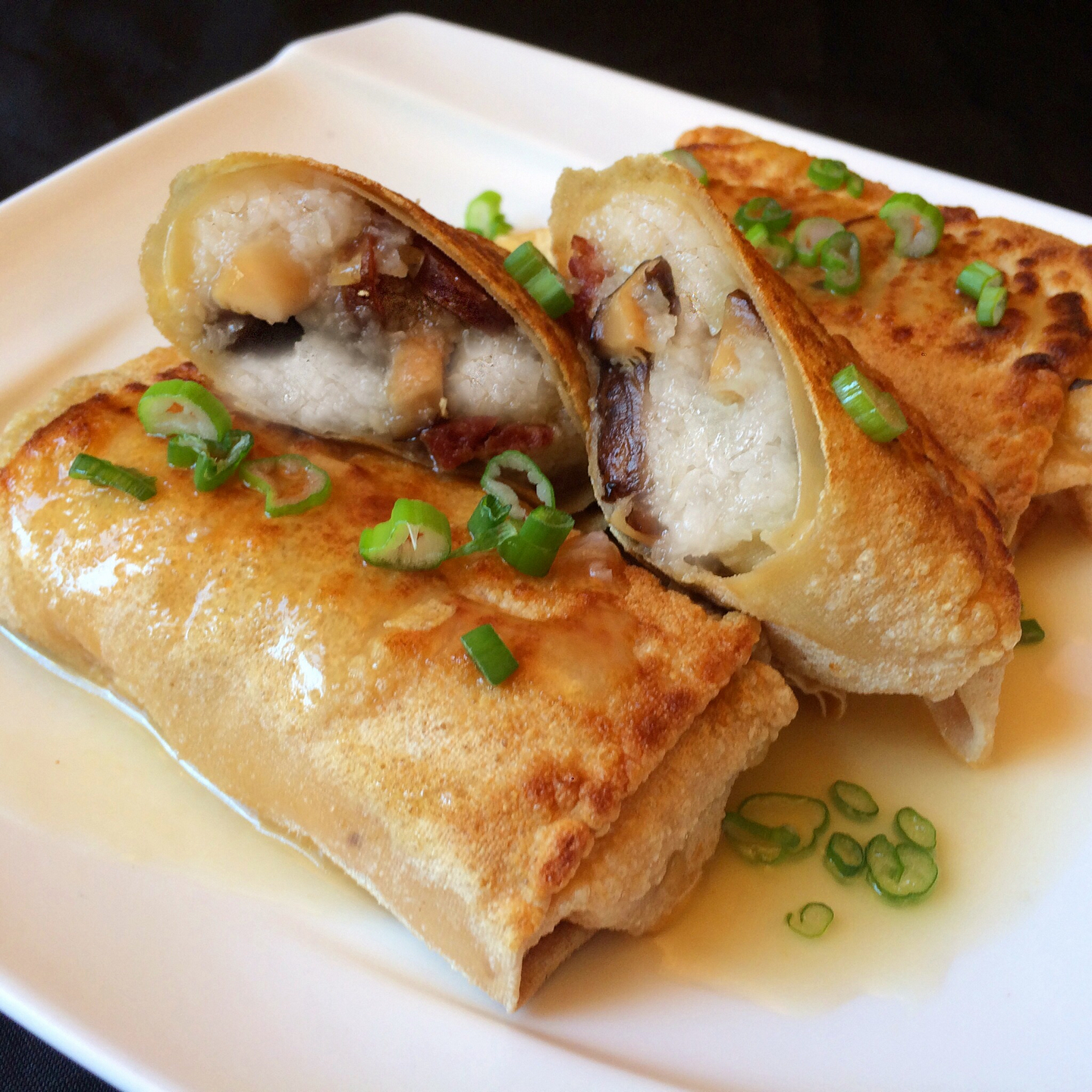Instagram Post 4/20/2020
👨🍳 Cooking in the Time of COVID 👨🍳
(Click on any image to view it in high resolution.)

Still working on spending down the freezer and the pantry before venturing out to go shopping; I’m trying for three weeks between shopping trips and even then only to replenish perishables. This time, the freezer yielded bean curd sheets, aka tofu skins, aka yuba, and enough other aliases to give a Most Wanted felon an inferiority complex. They can be found dried (to be reconstituted) or refrigerated/frozen, and their size and thickness dictate their use, sometimes for wrapping dim sum, sometimes for shredding into “noodles” either supple or crispy, sometimes as an ingredient in a stir-fry; they have myriad uses throughout Asian cuisine.
In addition, the freezer furnished lap cheong (Chinese sausages, 臘腸) and the pantry provided dried shiitake mushrooms and sticky rice, pretty straightforward. These specimens were steamed first, then fried, and napped with lightly thickened, seasoned chicken broth.
More experiments in the name of desperation to come!
Stay safe, be well, and eat whatever it takes. ❤️

I have often been drawn to the compelling display of Chinese sausages at our local 99 market in Hackensack, NJ but have yet to take the plunge. Can you describe some of what to expect taste wise? There seem to be a range of offerings and I’m wondering if there are major differences between the brands. Can you do a little informative instruction on the types and their ingredients? Sausages are always a little mysterious and ones from thousands of miles distant even more so. I have appreciated your adventuresome forays into the nooks and crannies of our areas’ wide assortment of offerings and know you can throw some light on this somewhat secretive subject. I am all ears, Sir. (Well, not really all ears. I am an overly plump armchair traveler who supplements my interests in the world at large by focusing on devouring the foods of indigenous cultures, in other words? I eat a lot. And often.)
Erc
Hello Eugene,
Thank you for your interest! I’ll try to answer your questions in writing, but for best results, I’d recommend tasting. Of course, the flavor of any food is difficult to describe; I mean, what does a banana taste like – other than “sweet”, which could describe almost anything. Cantonese lap cheong (the kind I’ve used here) are generally dry, fatty and unctuous, intensely savory, and sometimes with a background of sweetness – but the kind of alcoholic sweetness you might find in wine, not in dessert. Some are prepackaged, some pairs of links will be hanging from short ropes.
This might be helpful: if you’re tasting Italian sausage, for example, regardless of brand or hot-vs-sweet, they possess enough family similarity that you know you’re not eating Mexican chorizo or Polish kielbasa – and those two, in turn, also possess a certain regional sameness regardless of which of the many varieties you’re sampling; that’s the view from 20,000 feet, at least until you zoom in and get into the finer points. So I would say that for Cantonese lap cheong you shouldn’t be too concerned about brand or type (with or without liver for example) if you’re just starting out. Buy a small amount and you’ll get a pretty good overview. Try cooking it in the same vessel that you’re cooking rice in; the two make a great combination, the savoriness of bits of sausage plays well off the blandness of the rice and if you’ve cooked them together, they’ll flavor the rice as well. They have too much personality to just eat them alone – a little goes a long way.
Check the interwebs for more info and recipes for their use. Hope this helps!